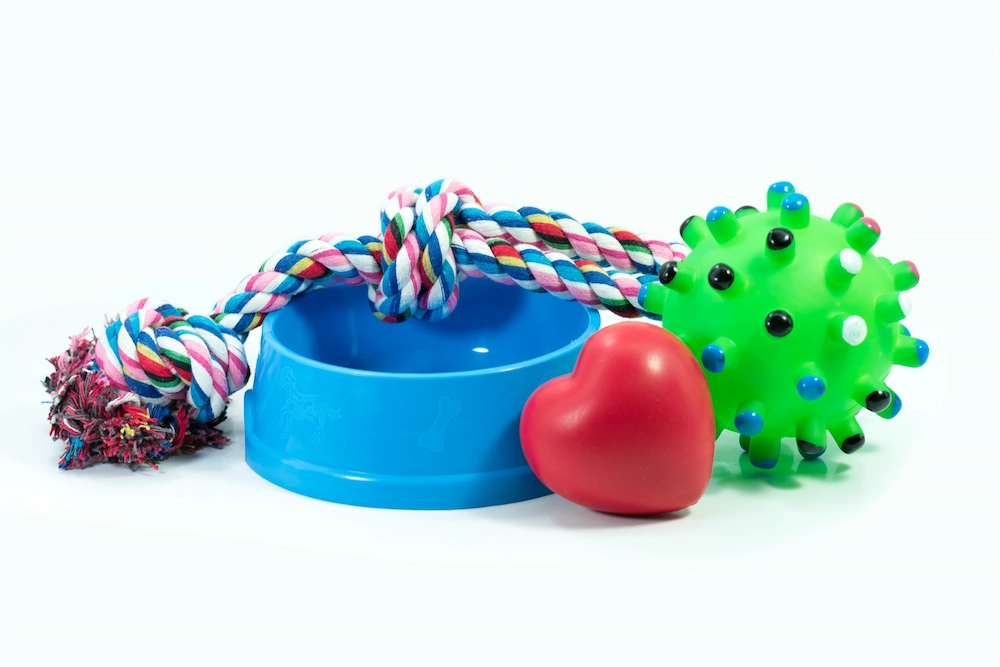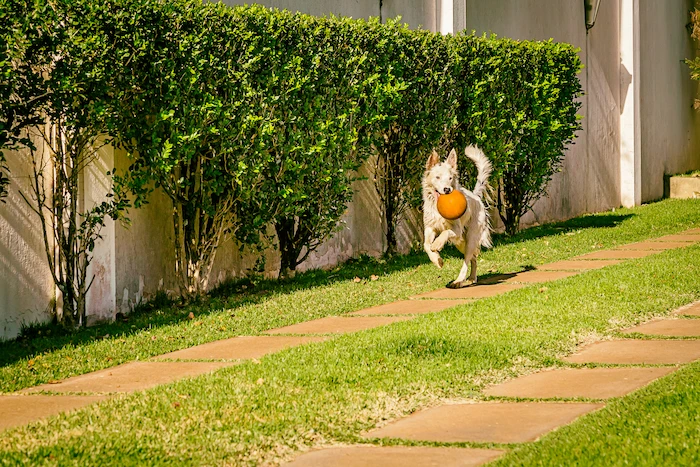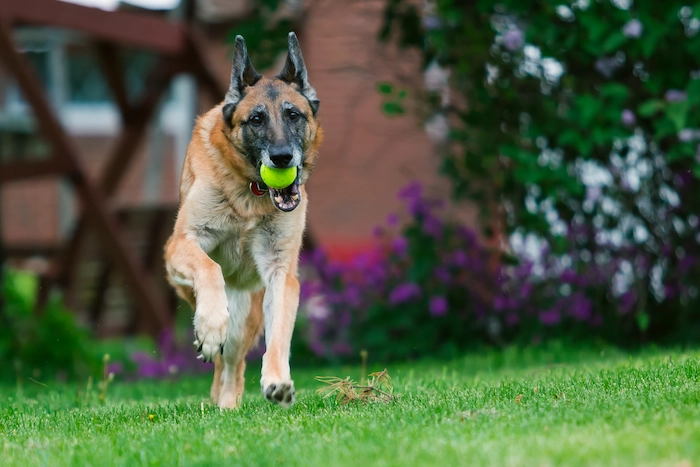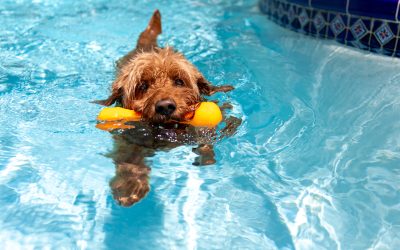Playing a fun game of fetch is one of the most beloved activities between dog owners and their pups. It seems all dogs love playing a fetch game, so you may be surprised if your furry friend gives you a puzzled stare when you excitedly throw toys for them to retrieve.
The bad news is that fetching doesn’t come naturally to all dogs. Dogs bred to hunt or fetch prey — such as the German pointer, Labrador retriever and Belgian Malinois — may immediately understand that they must return thrown items to you. However, the fetch instinct for other breeds may not be as strong.
The good news is that you can teach any dog how to fetch. What’s more, teaching your dog to play fetch can be fun for both of you. Follow these step-by-step instructions on how to teach a dog to fetch so you can start having fun with your pup.
What You’ll Need to Teach Your Dog to Fetch

Preparing your arsenal before starting fetch training will minimize interruptions and help maintain your dog’s attention on the lessons.
Here are the must-haves for any fetch training session:
- Toys. Start fetch training with a wide selection of toys until you find one your dog likes. Balls, ropes and plush toys appeal to most canines. However, older dogs or puppies that don’t like holding objects in their mouths may be more motivated by toys with compartments containing their favorite treats.
- Motivators. Many dogs are motivated by food, so using a treat your dog loves as a reward when it does something you like can encourage it to pay attention and learn faster. However, you can use praise, pats and scratches to motivate dogs that aren’t food-driven.
- Clicker. A clicker fosters good communication between you and your dog early during training. After a while, you can use the clicker without rewarding your pet to tell it it’s doing a good job. Use a physical clicker or phone clicker app, or you can improvise using the end of a retractable pen. Some people prefer using short, sharp words such as “Yes” or “Good” instead of a clicker.
3 Tips for Training Your Dog to Fetch
Use these tips to improve the chances of success when teaching your dog fetch:
Start in a Small Space
Begin training in a small or enclosed area to reduce distractions that can make your pup inattentive during training. You can start training sessions in your pet’s playpen, in your bedroom, on an enclosed porch or in a fenced backyard.
The Halo Collar can be invaluable during training as it issues gentle prompts to encourage your dog to remain in the designated training area.
Keep Your Dog Safe
Choose a training area free from obstacles that could trip or injure your dog. A small empty storage room or an enclosed balcony are ideal training grounds if you live in an apartment.
If you’re teaching fetch outside, use the Halo Collar to ensure your pet doesn’t wander into the neighbor’s yard or, worse, into the street outside.
Be Patient
Teaching isn’t for the faint of heart, especially if your dog doesn’t have natural fetch instincts. It’s essential to have a little patience when training your dog, since it can become unmotivated and uncooperative when it senses your frustration. Don’t shout at or scold your dog if it doesn’t grasp training concepts.
Above all, don’t push your pup. Train it for a few minutes during the day, and don’t force it to go beyond its limits.
How to Teach a Dog to Fetch
Step 1: Generate Interest in Fetch Toy
- Begin by sitting at eye level with your pup and holding the toy before you.
- If your dog isn’t interested in the first toy, exchange it for a second toy from your selection until you get one that catches its attention.
- Wait until your pet sniffs at the toy or ball before clicking and rewarding it with a treat or scratch. Repeat a few times.
- Raise the stakes by rewarding only if your pup puts its mouth on the ball.
Step 2: Teach How to Hold
- Once your pup knows to put the ball in its mouth, don’t reward it until it holds it for a few seconds.
- Place the ball on the ground and reward when your dog picks it up and holds it in its mouth. Remember to take the toy back before offering the reward so your pet doesn’t drop it.
- Increase the duration between rewards by 30 seconds to teach it to hold for longer.
- Introduce a “Hold” verbal cue.
- Repeat until your dog can hold on command for more than a minute.
Step 3: Teach How to Chase
- Throw the fetch ball a foot away instead of placing it on the ground.
- Praise your pup or use a cue like “Get it” to prompt it to go after it.
- Issue a reward when your dog chases the ball and holds it in its mouth. Repeat a few times. Always remember to take the toy away before rewarding.
- Increase the throw distance and issue the chase command.
- You can hold your pet back after throwing the toy, allowing it to tug against you for a few seconds before letting it go. Holding it back makes the toy more desirable and excites the dog to run after it.
- Reward intermittently to teach your pup to chase and hold the toy without expecting a treat.
Step 4: Teach How to Retrieve
- Throw the toy 1 or 2 feet away and allow your dog to chase and hold it.
- Make a “come back” motion with your hand or issue a command like “Bring” in a loud and cheery voice.
- Click when your pup starts walking toward you with the ball in its mouth.
- When the dog reaches you, remove the toy from its mouth and give it a treat.
- Continue throwing the ball, increasing the throw distance and pacing the rewards until your pup chases and retrieves without being asked or rewarded.
Step 5: Teach How to Drop
- When your dog brings the toy back, hold your hand under its chin instead of taking it from its mouth.
- Introduce the “Drop it” command, repeating it until your dog drops the toy. Don’t lose patience and try to pry the toy from your dog’s mouth. If your dog runs away while holding the toy, repeat the “Bring” command without moving from your spot.
- Click and reward with treats when your pet drops the toy.
- Repeat until your pup understands it’s rewarded only if it brings the toy back and drops it into your hands or on the ground.
- Reward intermittently to reinforce the drop lesson.
Play Fetch Outside

Completing the training steps outlined above can help you and your dog have video-worthy outdoor fetch games. Playing fetch can make even the laziest dog active and make daily walks more fun for both of you.
You can keep your pup safe during outdoor fetch games using the Halo Collar. One of the most useful Halo Collar features is its ability to store up to 20 wireless fences.
You can create virtual fences for your dog within your yard, the yard of the doggy daycare, your relatives’ yards and the boundaries of multiple parks. This way, your pup knows when to stop pursuing a fetch toy and thus stay out of traffic, bodies of water and dangerous woods.
Get your Halo Collar today to enjoy safe outdoor fetch games with your pup.










